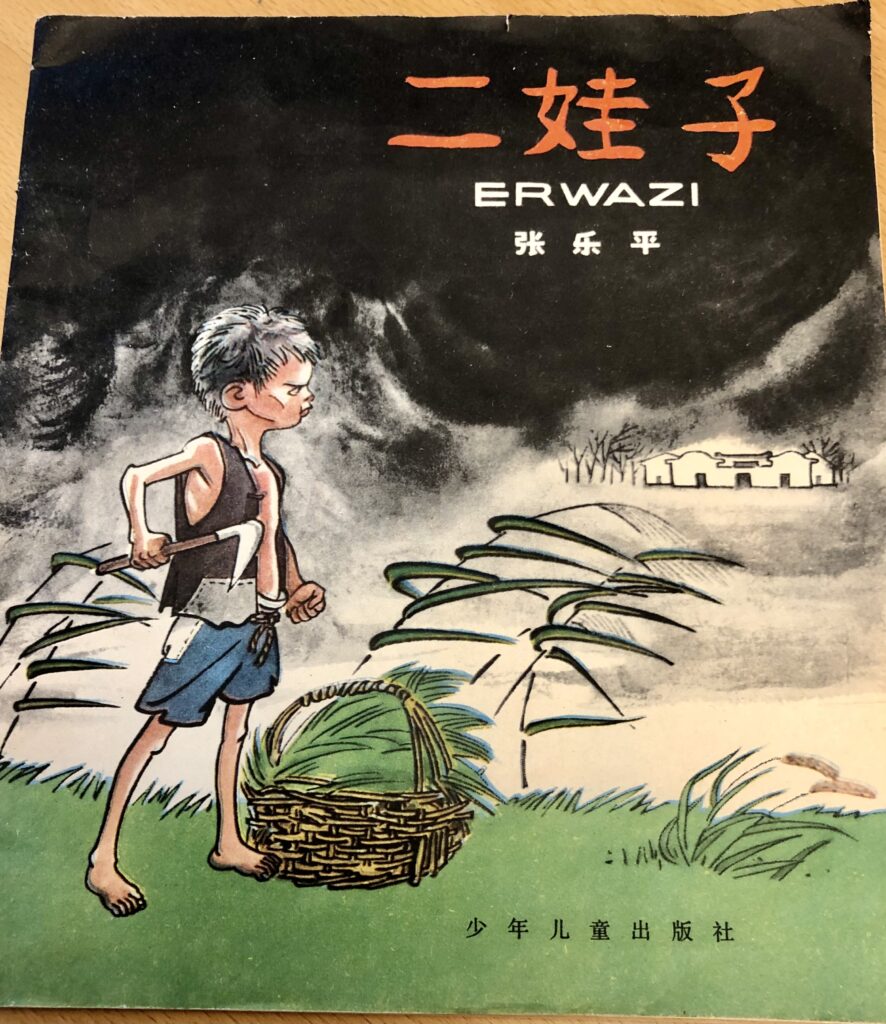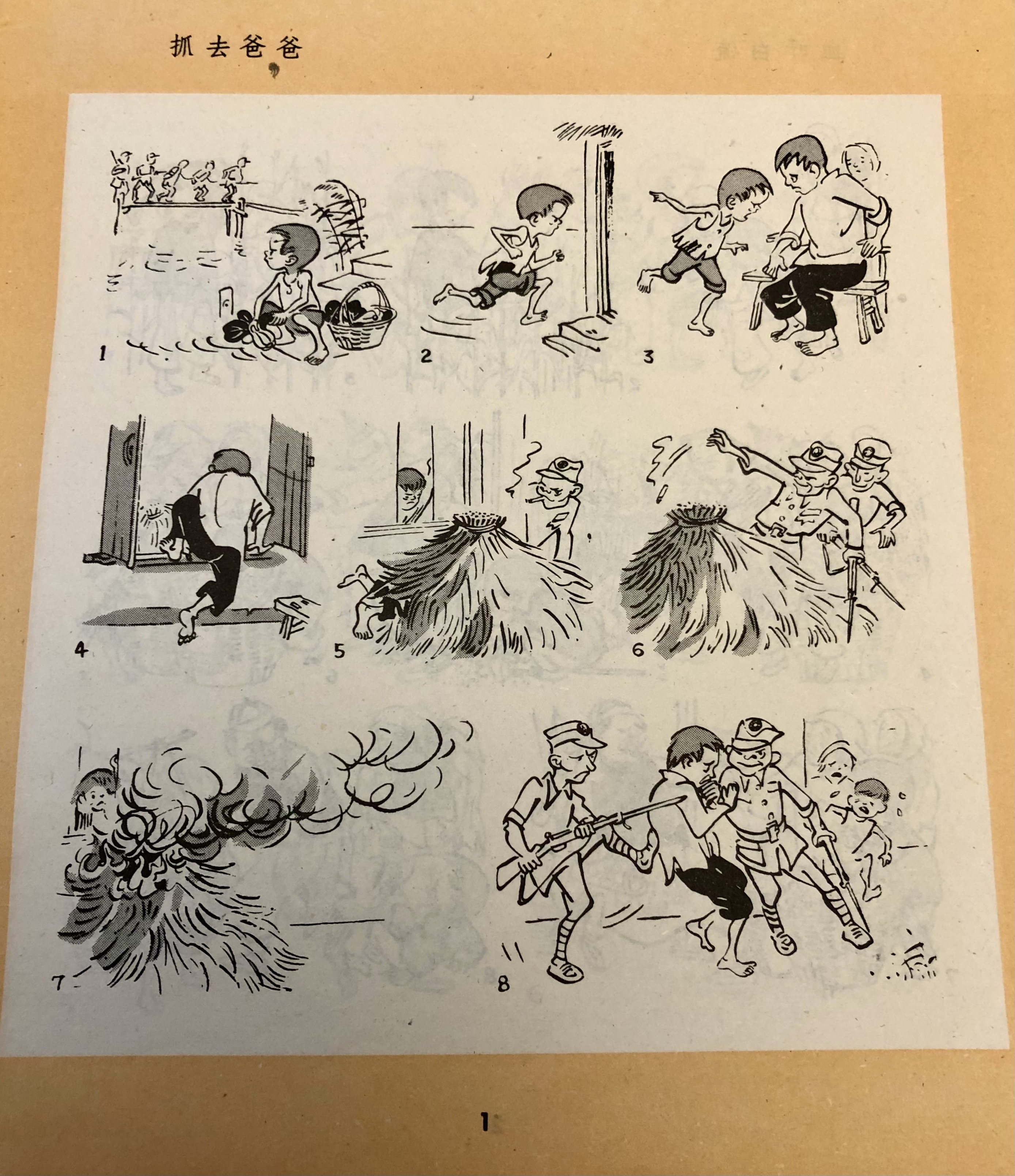
Maybe you have heard of Sanmao 三毛? One of the most well-known modern Chinese manhua 漫画 characters, created by Zhang Leping 张乐平 (1910-1992). Sanmao even has his own webpage in Chinese. The book of the day is another of Zhang Leping’s creations, Erwazi 二娃子, literally meaning ”Second Child” but also with a diminutive and affectionate implication. This booklet was published in 1978 and while keeping the distinct style of Zhang Leping has a very obvious Communist and anti-Kuomintang moralist tendency. Zhang Leping was threatened during the Cultural Revolution, and stopped writing and drawing in for ten years, resuming his public work only in 1977.







Unlike Sanmao, who is an orphan, Erwazi does have a family to begin with. But the ”reactionary Kuomintang” arrests his father, and then everything goes wrong. The family is harassed by an evil landlord, split up, grandmother almost dies, little sister hidden away, Erwazi is mistreated but struggles, and then Father comes back with the People’s Liberation Army! Family reunited, the ”bad guys” arrested and landlords struggled. Not so interesting story as such, but Zhang Leping was still a fantastic manhua artist!
And, yes, manhua is the same word as manga in Japanese, a classic example of what is sometimes called a ”circular loan” between Chinese and Japanese. An originally Chinese word for a literati painting style in the 17th century developed to what we now know as manga in 19th century Japan – and then was borrowed back from Japanese into Chinese in the early 20th century for a distinct Chinese comics style.
